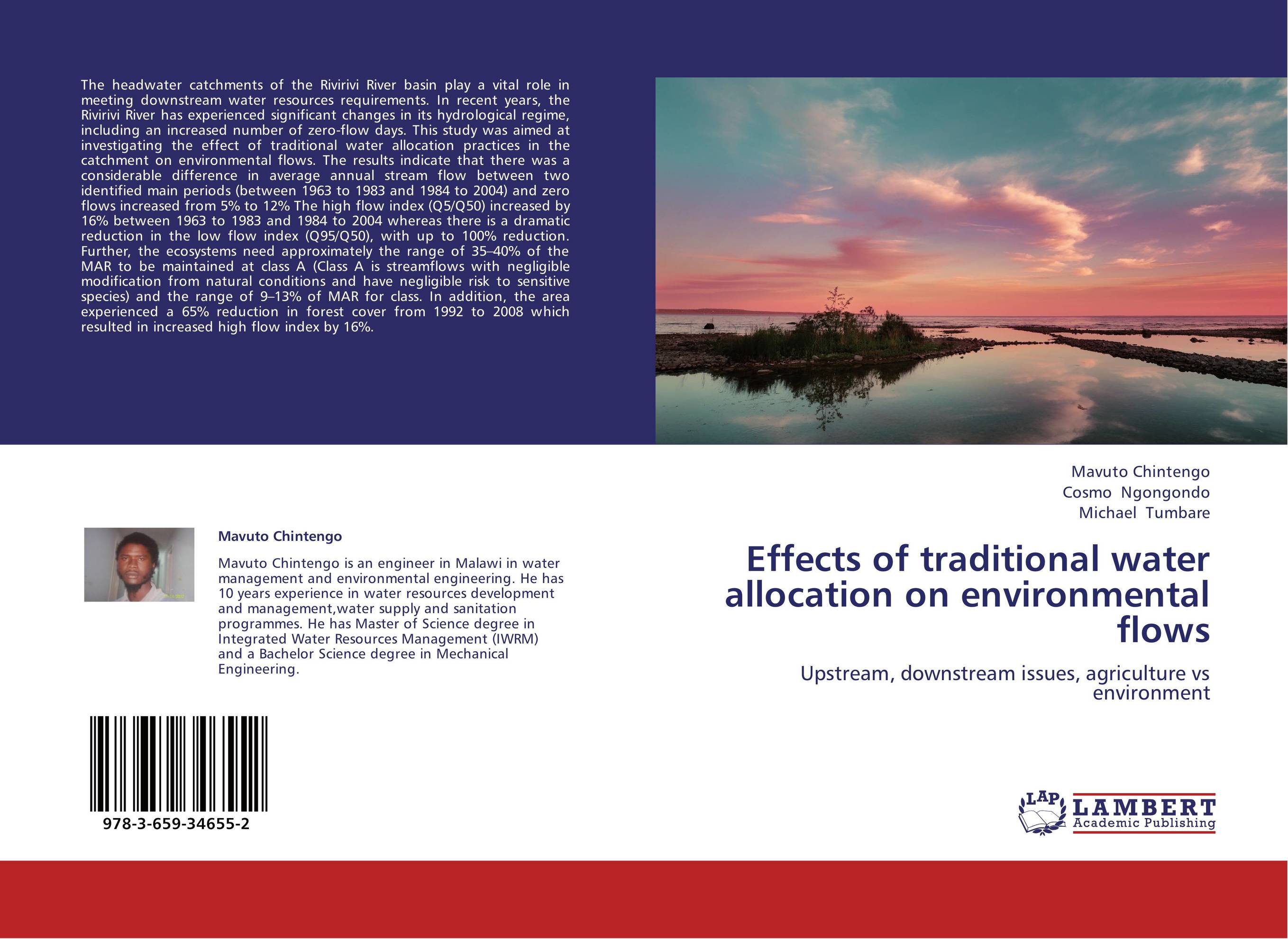| Поиск по каталогу |
|
(строгое соответствие)
|
- Профессиональная
- Научно-популярная
- Художественная
- Публицистика
- Детская
- Искусство
- Хобби, семья, дом
- Спорт
- Путеводители
- Блокноты, тетради, открытки
Effects of traditional water allocation on environmental flows. Upstream, downstream issues, agriculture vs environment

В наличии
| Местонахождение: Алматы | Состояние экземпляра: новый |

Бумажная
версия
версия
Автор: Mavuto Chintengo,Cosmo Ngongondo and Michael Tumbare
ISBN: 9783659346552
Год издания: 2013
Формат книги: 60×90/16 (145×215 мм)
Количество страниц: 92
Издательство: LAP LAMBERT Academic Publishing
Цена: 34044 тг
Положить в корзину
| Способы доставки в город Алматы * комплектация (срок до отгрузки) не более 2 рабочих дней |
| Самовывоз из города Алматы (пункты самовывоза партнёра CDEK) |
| Курьерская доставка CDEK из города Москва |
| Доставка Почтой России из города Москва |
Аннотация: The headwater catchments of the Rivirivi River basin play a vital role in meeting downstream water resources requirements. In recent years, the Rivirivi River has experienced significant changes in its hydrological regime, including an increased number of zero-flow days. This study was aimed at investigating the effect of traditional water allocation practices in the catchment on environmental flows. The results indicate that there was a considerable difference in average annual stream flow between two identified main periods (between 1963 to 1983 and 1984 to 2004) and zero flows increased from 5% to 12% The high flow index (Q5/Q50) increased by 16% between 1963 to 1983 and 1984 to 2004 whereas there is a dramatic reduction in the low flow index (Q95/Q50), with up to 100% reduction. Further, the ecosystems need approximately the range of 35–40% of the MAR to be maintained at class A (Class A is streamflows with negligible modification from natural conditions and have negligible risk to sensitive species) and the range of 9–13% of MAR for class. In addition, the area experienced a 65% reduction in forest cover from 1992 to 2008 which resulted in increased high flow index by 16%.
Ключевые слова: Malawi, Environmental Flow Requirements, Traditional water allocation, Rivirivi River



